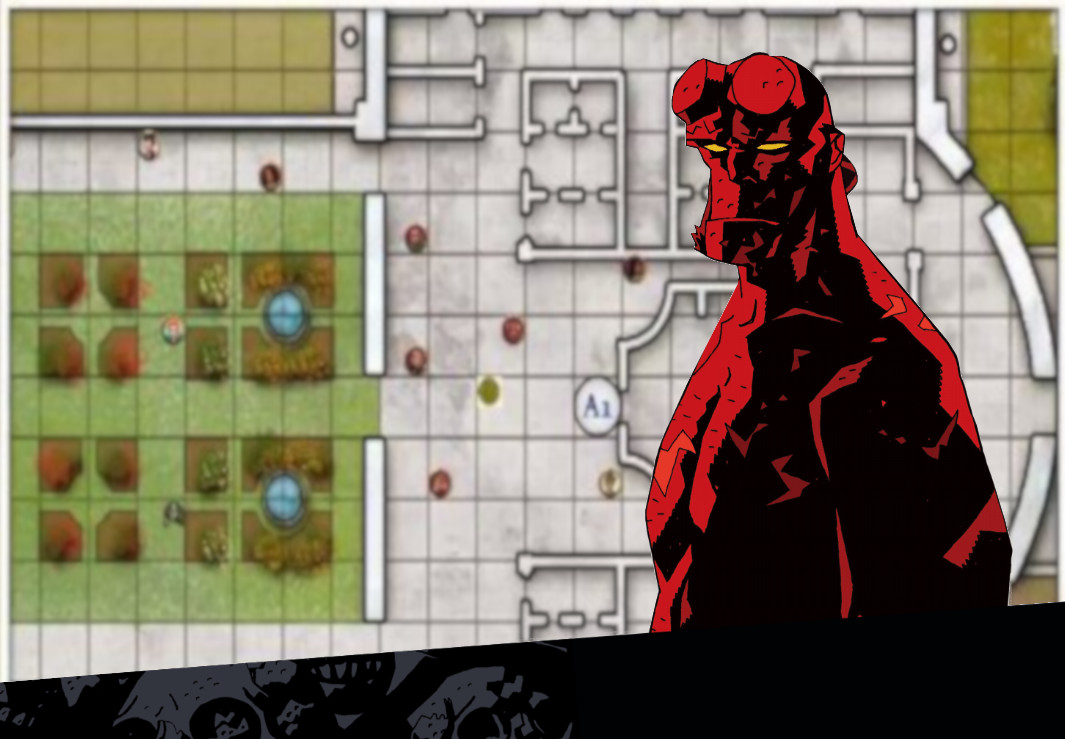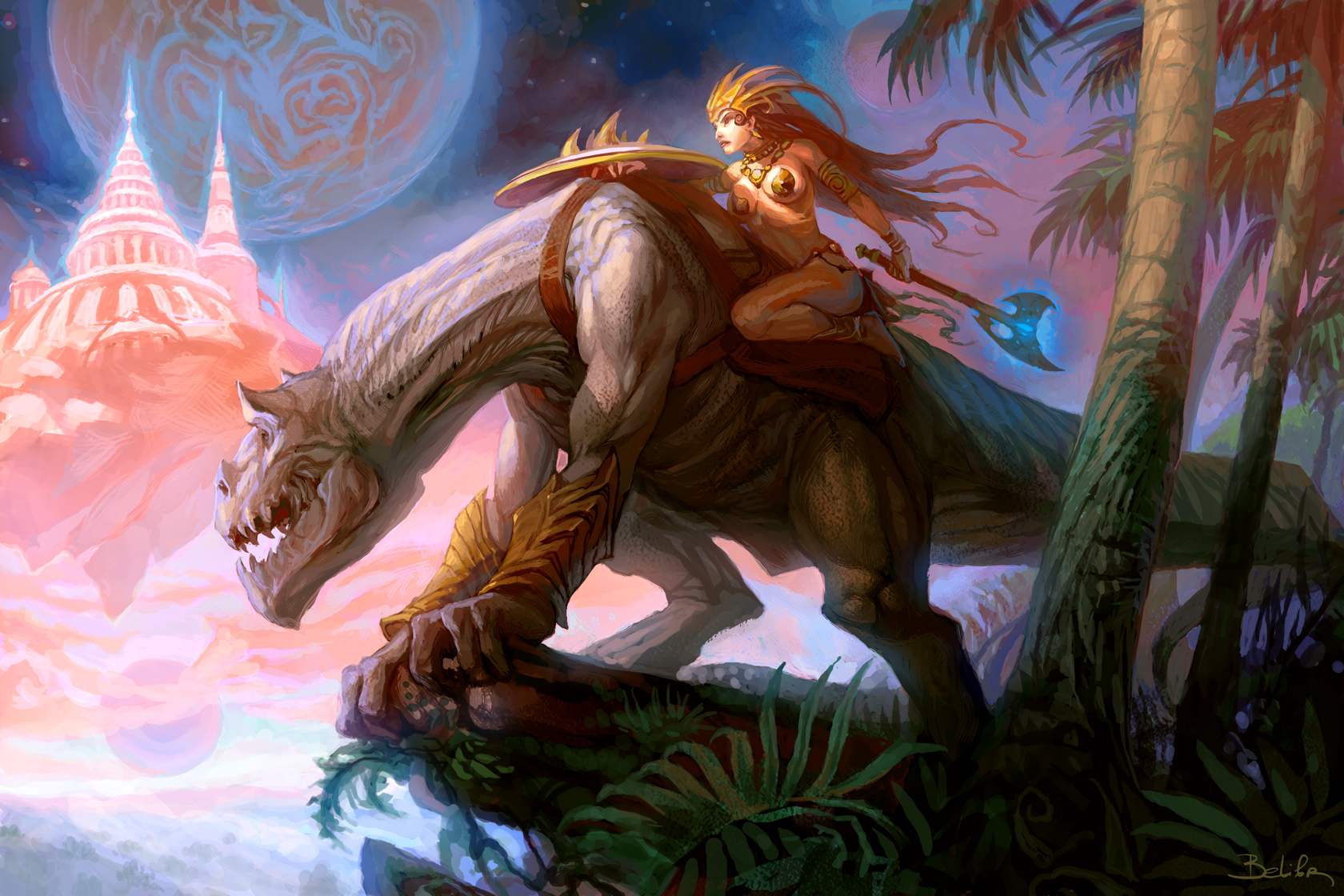Yesterday’s Game Design Unboxed inspired today’s Behind The Screens. In it, James Hewitt and Sophie Williams discussed the game they co-designed, Mantic Games’ Hellboy: The Board Game. Even though it’s not a roleplaying game, they described the mechanics that build to the end of the game like a story building to its last act.
Hellboy: The Board Game feels like a game with a story to tell. So much so, it inspired me as a Game Master.
How Board Games Tell Stories
Most successful board games tell a story. The combination of themes and goals work the same way as most story structures for scripted media. Who wants what, and what obstacles are in their way?
In a competitive game, the rules set immutable parameters. In a dramatic sense, the rules are the world building. Who can use lightsabers and the force, and how? The players not only fill the roles of the protagonists, from their perspective, but also as one another’s antagonists. They strive to achieve their goals with the resources they have access to, and overcome their obstacles: one another. This applies to symmetrical games (where all sides have equal access to the same resources, like chess) and asymmetrical games (where luck and choices like which character to use changes how each player plays in ideally balanced ways), as well as team vs team, one versus many, and even judged party games.
In a cooperative game, like Hellboy, the rules act as both immutable parameters and obstacles to overcome. They operate on an engine that requires some player interaction, but no player choices. In Hellboy’s case, the game uses an Impending Doom Track as a countdown mechanism, and engages with players through Doom Cards. The further the Impending Doom Track progresses, the higher the tension. However, the better that players address the Doom Cards, the more likely they enter the last act under favourable circumstances. This gives them small goals to work towards on every turn that they can invest in, emotionally.
Board games share three design and play elements that impact tension rises and their stories unfold.
Organic Storytelling
Because board games are a struggle between players, much of the drama comes directly out of playing the game. When a chess player captures a back row piece, or even just puts a piece in an optimal position, the power dynamic between the players shifts. Even an abstract children’s game like Connect Four builds to a dramatic high as the players narrow down each other’s choices while working towards a goal.
Thematic games use the concept behind the game to add dramatic layers to the tension. Monopoly tells a story of resources getting scarcer as the cost to play increases. That’s assuming you don’t play with any house rules that add more resources to the game. If you do play with house rules like Free Parking pay-out, you change the story from resource management to power fantasy. Suddenly, plentiful resources allow you to walk on other people’s property and even go to jail without serious risk of elimination. However, these house rules (that are absolutely not in the rules and people choose to add them) show how a game’s rules affect how the story plays out.
Monopoly house rules mess with the dramatic arc inherent in the game. Many players using these house rules abandon games before reaching an end, and even complain that the game takes forever (which, I can’t emphasize enough, is a resource management game in which they’ve voluntarily increased access to resources). That’s because it fulfills the purpose of the modified version of the game (invisibility through wealth) before the prescribed ending (running out of resources).
Orchestrated Storytelling
Technically all game design choices were orchestrated, but some rules add intensional exceptions to how the engine would play out naturally to compensate for luck or to add to the drama.
Popular cooperative board game Pandemic (well, at one time it was popular. Not sure how living through an actual pandemic affected how people see the game) illustrates this perfectly. During setup, you choose between how many of the six Epidemic cards you’ll include in the player deck. The more Outbreak cards, the harder the game. That’s an example of orchestrating the experience, but not the storytelling.
Once you’ve selected your number of Epidemic cards, you divide the player deck into that many piles, adding an Epidemic card to each. This creates the game’s arc. The longer you play, the more Epidemic cards you’ll hit, but at a measured rate. The game even suggests that if the piles aren’t equal, to put the smaller piles at the bottom of the deck. That means that the longer you play, the faster Epidemic cards show up.
Meta Storytelling
This is the element of storytelling brought up in the Hellboy episode of Game Design Unboxed that brought GMing to mind. Meta storytelling is when an element outside of the rules factors into the game experience.
In Hellboy, when the Impending Doom Track reaches the end, or the players intentionally trigger the endgame early, the board changes and the final battle begins. This literal change in the landscape of the game impacts players psychologically. It gives everyone a minute to reflect on the condition of their characters, the resources at hand, and the conflict they’re about to enter into. It’s the equivalent of finding a save point before a boss battle in a video game.
Roleplaying Games And Board Game Storytelling
Bringing it all together, roleplaying games are like board games with an emphasis on storytelling. However, we don’t need to do all of the storytelling heavy lifting, my fellow GMs. In fact, we should remember that by virtue of playing a game, a story already plays out.
We do orchestrate storytelling moments, of course, escalating the threat of obstacles as the adventure plays out and revealing the plot through breadcrumbs we deliberately space out during an adventure. However, we should also lean into the story that organically unfolds during our sessions. If we establish a monster as a real threat and then we botch its attacks for the entire combat as the players carve it to pieces, the game didn’t ruin the story we were trying to tell. We just didn’t know that we were setting up a laughably one-sided combat. But that’s organically what happened.
Roleplaying games also have meta storytelling moments. When we, as GMs, pick up dice, or ask our players if they’re sure about their choice, we’re changing the landscape of the session. There’s nothing in the rules dictating what it means when we pick up our dice or ask our players questions. However, experienced players catch onto the pattern than picking up dice means more granular rules are at play. They know if we’re asking if they’re sure, the stakes are higher and they must proceed with caution.
The better we understand the many types of storytelling baked into our campaigns because they are games, the more fun we can have using them.
Every two weeks, Ryan Costello uses his experience as a Game Master, infused with popular culture references, to share his thoughts on best GMing practices to help his fellow GMs. Often deconstructing conventional wisdom and oft repeated GMing advice, he reminds his fellow GMs that different players play the game in different ways, and for different reasons.






